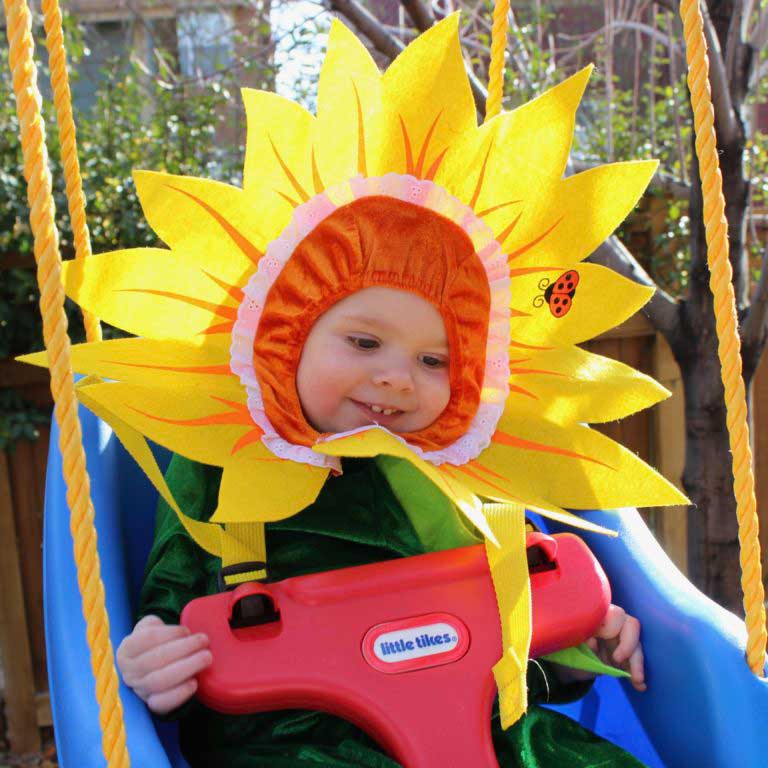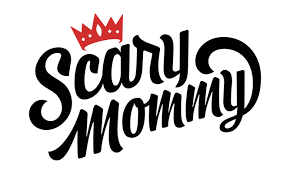Handling Halloween, No Hiding Required
As my first Halloween as a new mother approached, I grew increasingly anxious. This was back in October 2012, when June was just six months old. Her developmental delays were becoming more visible. I saw the kids in our neighborhood running around in their costumes, and I kept thinking
But will that really be June one day? Will she be able to run up to a neighbor’s door and say, “Trick or treat!”?
Holidays can be tough for families of children with special needs, and for me, Halloween was the worst. But what I learned with June was that the first time facing any special event is often the most difficult. After that first difficult Halloween, I figured out how to participate in a way that worked for us; we picked out a costume that reflected an aspect of June’s personality that we cherished or that related to how we saw her in our lives.
For our second Halloween, we found a ladybug costume for our “Junebug,” as we’d begun calling 
her. For the third Halloween, we were living in Colorado where it was sunny all the time. June reminded me so much of a sunflower, and I bought her a little sunflower costume with petals branching out around her face.
As the fourth Halloween approached, June was just being discharged from the hospital after a month in the ICU. We dressed her as Supergirl. We saw her as a superhero through and through.
Preparing emotionally for the upcoming event, and devising a plan of action can go a long way toward helping you cope. Here are some tips for getting through your first Halloween as a parent of a child with special needs:
1. Skip What Spooks You
For some families, the whole situation just feels too awkward or sad. It’s okay to turn off the front porch light and just go to dinner. It’s perfectly fine to avoid a situation that will make you sad. You can leave a bowl of candy out or just skip giving candy all together.
2. Or Jump In, No Second-Guessing Required
If you want to join in on the fun – do! It’s not your job to make other people feel comfortable about your child. This is your family, and you are fine as you are. You get to celebrate the holidays as you wish.Embracing the holidays can actually inspire others. As we discovered, family and friends often love having you join them. Seeing how you interact with your child helps them reflect on their own parenting struggles and successes, and can model for them how to best interact and respond to your child.
3. Embrace the Dress-Up
This is one time of year when your child can be anything she dreams of—and you can go all out with your creativity. You can go with a costume that reminds you of some aspect of your child, as we did, or pick something silly or fun or dreamy or beautiful. But what if your child is in a wheelchair? More to dress up! I’ve seen many pictures of families who have incorporated the wheelchair right into the costume—maybe a princess on a chariot, a race car driver (and car), a farmer in a tractor or a sailor and a boat.
4. Feel Free to Change Your Mind
It’s okay to not know how you are going to handle a situation. If you think you’re up for something, such as trick or treating, and then discover, after the first house, that you’re not, you can just go home. We don’t know how we’ll react to a new situation until we’re in it, and part of enjoying any holiday is respecting your own experience and that of your child.
5. Treat Yourself
Halloween is exhausting for all parents—helping create costumes, running from house to house, going through the loot, setting limits on how much candy a child can consume in one night. For parents of a child with special needs, all of these aspects are extra complicated. You deserve a treat for all your effort—whether that’s a mini Snickers bar taken from your child’s stash or an adult-size hot fudge sundae after all the kids are asleep. Remember, this is a holiday.







